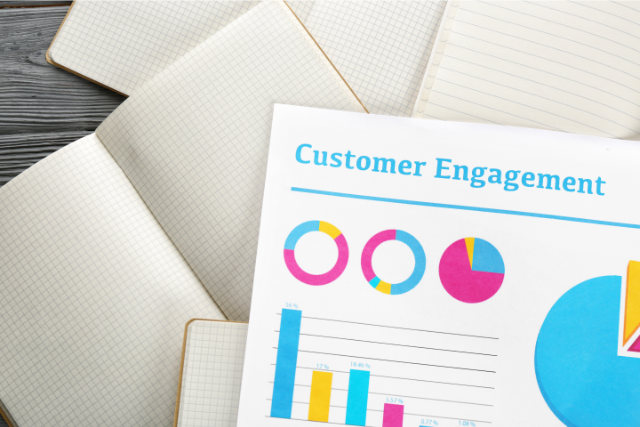
Nowadays, especially in a world where customers are becoming more discerning, increasing customer engagement is critical for businesses that want to be successful. But what exactly does customer engagement mean? How do you measure it if you don’t have the right tools, resources, and experience? How can you increase customer engagement in the first place? In this blog, you will get answers to all these questions.
What does customer engagement mean?
To be able to delve deeper into customer engagement, it is crucial to understand the common thread. It’s all about the emotional connection customers have with a brand. It goes beyond just satisfaction; It’s about building strong and lasting relationships with customers for the benefit of common interests. This interaction can take place in many ways. Think of posting positive experience reports on Google My Business, or participating in customer surveys, but of course also through social media. The greater the connection between the customer and the company, the better the engagement. This means that customer satisfaction is also higher. And customer satisfaction and customer loyalty have a positive relationship: what you ultimately want to achieve. Read more about loyal customers and how you can increase your group of loyal customers here.

Ways to increase customer engagement
Ideally, you will be found by customers on as many communication channels as possible. In this way, you use many different channels as a strategy. For example, there are the traditional channels, such as (offline) newsletters, social media and TV, which are often used as a first step to increase customer engagement. However, there are countless other ways to achieve this goal.
Focus on content
Content remains the key to success. Regardless of whether you decide to compose an email, post, or write a blog, valuable content for your customers is one of the most effective ways to increase engagement. It’s the ideal way to show your expertise: that’s exactly what your customers are looking for. Think about what your target audience would find interesting to read and draw up a content plan. For example, as a clothing store, you can write blogs about the latest trends. Or as a car interior cleaner make a video with useful tips or satisfying results. Videos are driving the most engagement these days. With such relevant content, you not only attract the attention of customers, but you also keep them engaged.
Offer a loyalty program
Who doesn’t like to be surprised or rewarded? A loyalty program is also the ultimate marketing tool for improving customer engagement and loyalty, because you can optimally respond to personalization. You can design a loyalty program in different ways. Learn here on how to set up a loyalty program.
Be responsive
In addition to rewarding, it is also crucial to engage with your customers. Give them the opportunity to ask questions via your Instagram story or private messages, emails or review pages. At the end of the day, customer engagement is about making the customer feel heard and valued; Give them the space to interact, but also make sure that you as a company do something with it when necessary. By being responsive and responding to individual messages, you show that a real person stands behind your business, who actually cares about the customers.
Be open to feedback
To be even more responsive, you can take communication to the next level by actively asking for feedback. This can be done in an informal way. Think of posting a poll on social media. Or you decide to take a more formal approach through customer surveys. Give the customer the opportunity to easily complete a short survey within a few clicks. You can send it via email or add it as a QR code on the receipt. Customer engagement is increased when you invite customers to share their opinions and ideas, and even more so when you show that you actually act on the ideas and address any complaints.
The pillars of a successful customer engagement approach
Measuring the success of your customer engagement approach is essential to determining whether your strategies are effective. By analyzing customer feedback, repeat purchases, interactions on social media and your website, as well as customer retention and recommendations, you can gather valuable insights about the effectiveness of your approach. Remember, customer engagement is an ongoing process. Evaluating your results can help you improve and strengthen trust between you and your customers. And that’s for the long term.





